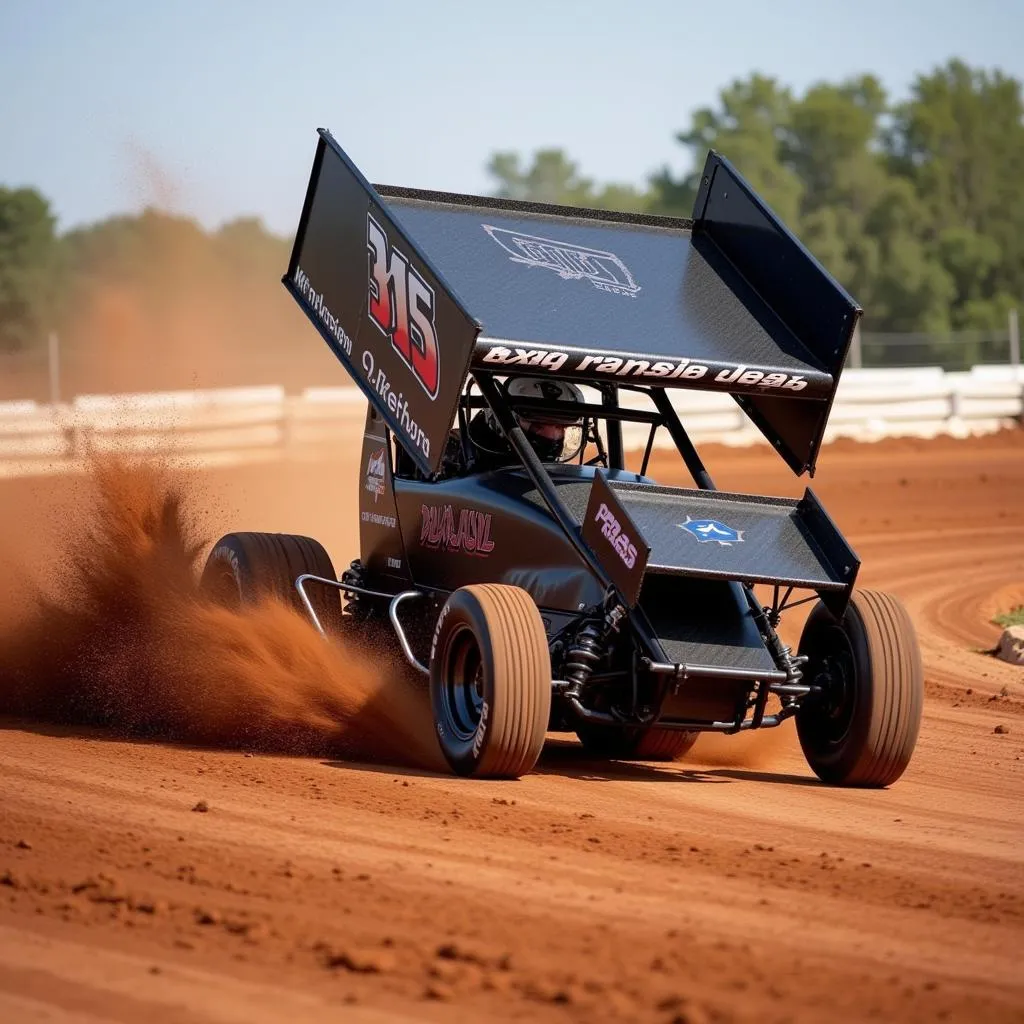Carbon Fiber Sprint Car Bodies: The Need for Speed and Safety
Carbon Fiber Sprint Car Bodies have been making waves in the dirt track racing world, and for good reason. These lightweight yet incredibly strong components offer a potent combination of speed and safety, giving drivers a competitive edge while providing an extra layer of protection.
Understanding the Appeal of Carbon Fiber
Before we delve into the specifics of carbon fiber sprint car bodies, it’s essential to grasp why this material has become so sought-after in motorsports. Carbon fiber is essentially a fabric made from thin, strong carbon fibers woven together and then set in a resin. This process results in a material that is:
- Lightweight: Carbon fiber is significantly lighter than traditional materials like fiberglass, leading to improved acceleration, handling, and overall performance.
- High Strength-to-Weight Ratio: Pound for pound, carbon fiber is stronger than steel, making it ideal for absorbing impact energy during a crash.
- Stiffness: The rigid nature of carbon fiber translates to better responsiveness and control, allowing drivers to push their cars to the limit.
The Advantages of Carbon Fiber Sprint Car Bodies
Now, let’s focus on how these properties translate to tangible benefits on the dirt track:
Enhanced Performance
 Sprint car speeding on dirt track
Sprint car speeding on dirt track
The lighter weight of carbon fiber sprint car bodies equates to a lower center of gravity and reduced overall mass. This translates into quicker acceleration off the corners, improved cornering speeds, and better responsiveness to driver input. In the high-stakes world of sprint car racing, these marginal gains can make all the difference.
Increased Safety
 Carbon fiber crash test
Carbon fiber crash test
Safety is paramount in any form of motorsport, and sprint car racing is no exception. Carbon fiber’s remarkable strength-to-weight ratio means these bodies can withstand significant impacts, effectively dissipating energy and potentially reducing the severity of injuries to the driver in the event of a crash.
Improved Durability
While carbon fiber might seem delicate, it’s surprisingly resistant to the wear and tear of dirt track racing. Unlike fiberglass, which can crack and deteriorate over time, carbon fiber holds up better to vibrations, debris impacts, and the general rigors of racing. This longevity translates into potentially lower maintenance costs and a longer lifespan for the car body.
Considerations When Choosing Carbon Fiber
While the benefits are clear, there are a few factors to consider when opting for a carbon fiber sprint car body:
- Cost: Carbon fiber components are generally more expensive than their fiberglass counterparts due to the complex manufacturing process involved.
- Repairs: Repairing damage to a carbon fiber body requires specialized knowledge and techniques, potentially leading to higher repair costs.
The Future of Sprint Car Bodies
 Mechanic inspecting carbon fiber body
Mechanic inspecting carbon fiber body
As technology evolves and manufacturing costs potentially decrease, we can expect to see even wider adoption of carbon fiber in sprint car racing. This innovative material is continuously being refined, leading to even lighter, stronger, and safer components. The pursuit of performance and safety never stops in motorsports, and carbon fiber is undoubtedly at the forefront of this exciting evolution.
Conclusion
Carbon fiber sprint car bodies represent a significant advancement in dirt track racing technology. Their unique blend of lightness, strength, and durability provides drivers with a tangible performance advantage while enhancing safety standards. While cost remains a consideration, the benefits offered by carbon fiber make it an increasingly popular choice for racers looking to gain an edge on the competition.
